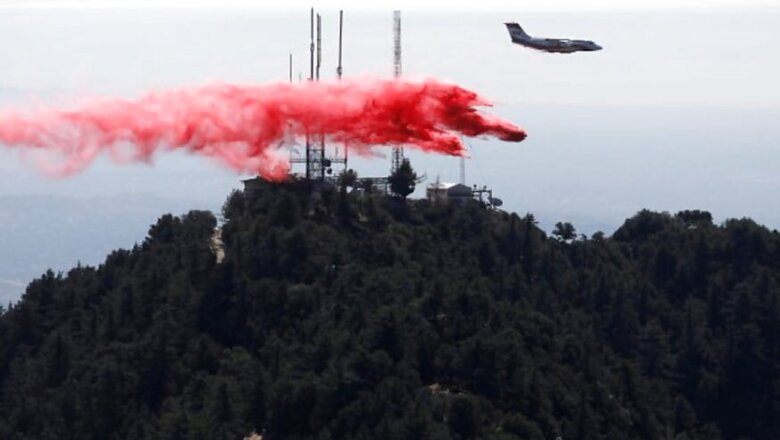
views
Los Angeles: Residents of Northern California's wine country left homeless by the state's deadliest-ever wildfires could be temporarily housed in federal government trailers, officials said on Wednesday, as the death toll from the blazes rose to 42.
Since erupting on Oct. 8 and 9, the blazes have blackened more than 245,000 acres, (86,200 hectares) and destroyed an estimated 4,600 homes along with wineries and commercial buildings.
Thousands of survivors, forced to flee the flames with little warning, remain displaced. Many are returning to find nothing left, forcing them to seek housing in emergency shelters or with family and friends.
The US Federal Emergency Management Agency has called trailers a solution of last resort for housing the displaced.
But local officials said they had few other options because of a lack of hotels and rental housing, especially around Santa Rosa - the urban hub of the region's wine country - which had nearly 5 percent of its homes destroyed.
"We have talked to FEMA about trailers, we're not sure what the availability is, how soon we could get them here, but we are looking at every option," Santa Rosa Mayor Chris Coursey told Reuters by phone.
"I don't relish having people living in FEMA trailers, but it's a hell of a lot better than sleeping out under the stars," he said.
FEMA deployed trailers to house thousands of people displaced by 2005's Hurricane Katrina along the U.S. Gulf Coast, triggering lawsuits by people who contended they were exposed to formaldehyde in the government-issued housing.
A judge in 2012 approved a settlement requiring builders of the trailers to pay a settlement of nearly $40 million.
FEMA's latest trailers, which it calls manufactured or temporary housing units, have new safety features and are built to high standards, the agency said in a blog post last year.
The agency is only at the beginning stage of determining which options to employ, in consultation with local officials, to house people displaced by the fires, FEMA spokesman Victor Inge said by phone.
"A temporary housing unit is an absolute last resort, they're expensive and they take a long time to get set up," Inge said.
'PROBABLY GOING TO NEED TRAILERS'
Officials with Sonoma County, which includes Santa Rosa, are considering sites with built-in utilities, such as running water and electricity, for mobile-home units, said Margaret Van Vliet, executive director of the Sonoma County Community Development Commission.
"We know we're probably going to need FEMA trailers," she said.
Firefighters on Wednesday were still battling the blazes, the deadliest in state history, as search-and-rescue teams picked through burned-out neighborhoods.
Law enforcement officials said the body of the 42nd confirmed victim was found late on Tuesday in the Fountain Grove section of Santa Rosa.
About 60 people remain missing or unaccounted for in Sonoma and Napa counties. Most of the more than 2,000 people listed in missing-persons reports have turned up safe, including evacuees who failed to alert authorities after fleeing their homes.
Fire officials said that while 13 major blazes were still burning as of Wednesday, the flames were largely contained and no longer considered a threat to homes or communities.
"We have stopped the forward progress and movement of all these fires, we have line around them," Brett Gouvea, a California Department of Forestry and Fire Protection deputy chief, told reporters at an afternoon news conference. A Santa Rosa couple whose house was destroyed sued Pacific Gas & Electric Company (PG&E) on Tuesday, alleging the utility failed to take preventative measures in the face of dangerous drought conditions.
Representatives for PG&E said that the utility was focused on supporting firefighting efforts and restoring power
About 30 vintners sustained fire damage to wine-making facilities, vineyards, tasting rooms or other assets, according to the Napa Valley Vintners industry group.




















Comments
0 comment